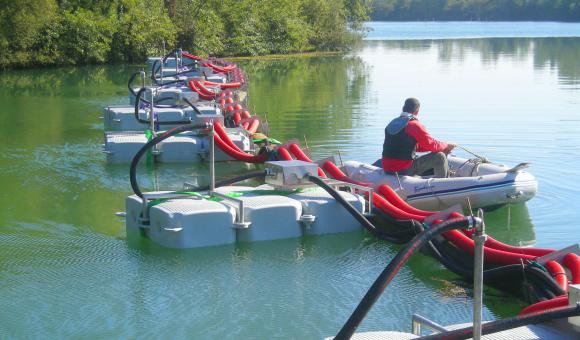
ProFish offers technological solutions in order to protect fish. This spin-off from the University of Liège (ULg), based in Namur (Wallonia), has just been chosen by Arte and National Geographic to study the behavior of sharks. Its technology will help the internationally known marine biologist Laurent Ballesta realize a documentary in the middle of Polynesia lagoons.
ProFish, whose visibility online enabled the company to win contracts in Amazonia, Argentina and even Tahiti, first started working on the conservation of eels in the river Meuse.
This spin-off from the ULg uses a technique based on an acoustic barrier generated by the emission of infrasound. “At first, this technology was developed at the University of Oslo. After my PhD thesis on the impact of cooling water intakes of the nuclear plant of Tihange, the University of Liège approved this technology and acquired an operating license. It now represents an efficient solution available to companies and managers of water bodies. Given the legislation proliferation in the world, for example the European Water Framework Directive, the market opens up to the entire world!”, explains Damien Sonny, PhD in Biology and founder of ProFish.
Wallonia has been among the best students of the European water policy since 2010, when it included a fish conservation measure in the operating licenses of hydroelectric dams, distinguishing the salmons and the eels from other species.
“Since 2010, the eel has been part of the protected species and appears on the red list of animals in danger, just as the koala. However, one of the causes of death is the number of dams that the eel has to cross in its migratory flow”, explains Damien Sonny.
With the radio-tracking technique, ProFish can monitor the movements of individual fish that have been tagged with radio transmitters. These telemetry measures enable to analyze the impact of dams and their turbines on fish extinction, then enabling ProFish scientists to suggest solutions.
ProFish, which gets half of its revenue from abroad, has already opened up a branch in France and intends to settle in Germany this year.







